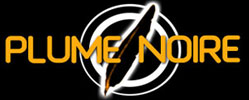
|
Kill Bill: Volume 2 review
:. Director: Quentin Tarantino
:. Starring: Uma Thurman, David Carradine
:. Running Time: 1:40
:. Year: 2002
:. Country: USA
|
As much as I liked the first chapter of Kill Bill,
there was something missing from the film, that pop
culture wit, which has become Tarantino's signature.
Volume 2 opens with the rehearsal of the Bride's
wedding. The flashback is shot in gorgeous black &
white and the camera stays close to the faces of Uma
Thurman and David Carradine. After the martial art
oriented first episode, Tarantino has
clearly defined the second volume of his epic as a
western whose roots are obviously in Italy but also in
classic American cinema—see the shot of the Bride
going out of the door that is reminiscent of John
Ford's The Searchers.
What makes Volume 2 a much superior work to Volume 1
is the fact that it stands as its own film. The
multiplication of indiscernible nemesis ad infinitum
has here left a place to strong individualization,
while what could earlier be seen as pure action
showoff appears now as a vibrant introduction to a
heartfelt and twisted tale of vengeance. The director
pushed his characters and situation over the limits in
the first half so that the ending becomes inevitable,
now the victim of logic behavior rather than of
human motivation.
The film focuses on the characters embodied by David
Carradine, Michael Madsen and Daryl Hannah and
especially the interactions between Carradine, Thurman
and their daughter. Once again, Tarantino made sure to
give a human face to all of them, making them flawed
figures who are capable of showing their softer side.
The filmmaker's signature is omnipresent in Kill Bill
2, which is a real drama with guts and humor, in the
tradition of Pulp Fiction. Sharp dialogues, absurd
situations and weird characters populate the film,
coming straight out of Tarantino's world.
But the real difference between this piece and earlier
works is how, after having plunged us into a bath of
blood, he takes us by surprise, defusing each action
scene: he gets rid of one of the characters in a
sneaky way, stages a sword fight in a trailer where
movements are limited, and finally opts for an almost
poetic conclusion for the grand duel. While I was
comparing his grandiloquent taste for blood to a big
kid orgasm in the first half, here we can assimilate
his approach to violence to premature ejaculation, as
if he were happy not to make it too easy for us, for
his—and our—own good. And this is what makes Kill
Bill a much more complex and different picture than most
entries in the revenge sub-genre. In that way,
Tarantino becomes close to Clint Eastwood who, in
his later works, has made sure to breach and corrupt
the straight path of vengeance and justice that made
his days in the late 70's/early 80's.
Since the beginning, Tarantino's onscreen universe has
been the projection of his own cinematic fantasies,
the director using his role, behind the camera, as God
trying to create his own world. He makes films he'd
like to see, drawing in his memories of thousands of
B-movies. In Kill Bill: Vol. 2, he alternates styles
and genres, color/black & white, western/martial arts,
even including a wink to his very own Pulp Fiction,
which is now part of cinema history. But this time,
following what we had foreseen in Jackie
Brown—remember when they watch TV—he pushes the
movie references, well beyond the borders of the
screen offered to the spectators, introducing them
into the lives of his characters. From the poster of a
Charles Bronson movie in the trailer of Bud (Madsen),
to mother and daughter watching Shogun Assassin in bed
and Carradine playing the flute (Kung-Fu) or wanting
to fight on the beach at dawn (Samurai III - Duel at
Ganryu Island), cinema has taken over its own world in
an incestuous mise-en-abime.
Volume 1 was a fun exercise, Volume 2 probably the
most exciting guilty pleasure of these last few years,
but Kill Bill, the complete version, is definitively a
masterpiece of genre cinema.
Fred Thom

 Kill Bill: Volume 1 Kill Bill: Volume 1
 Movie Reviews since 2012 Movie Reviews since 2012
 Reviews since 2012 Reviews since 2012
|
|


